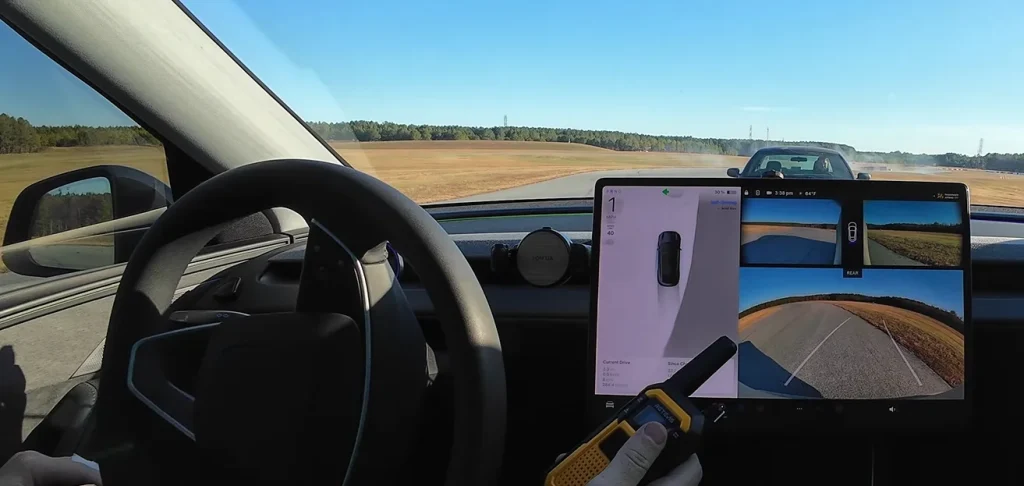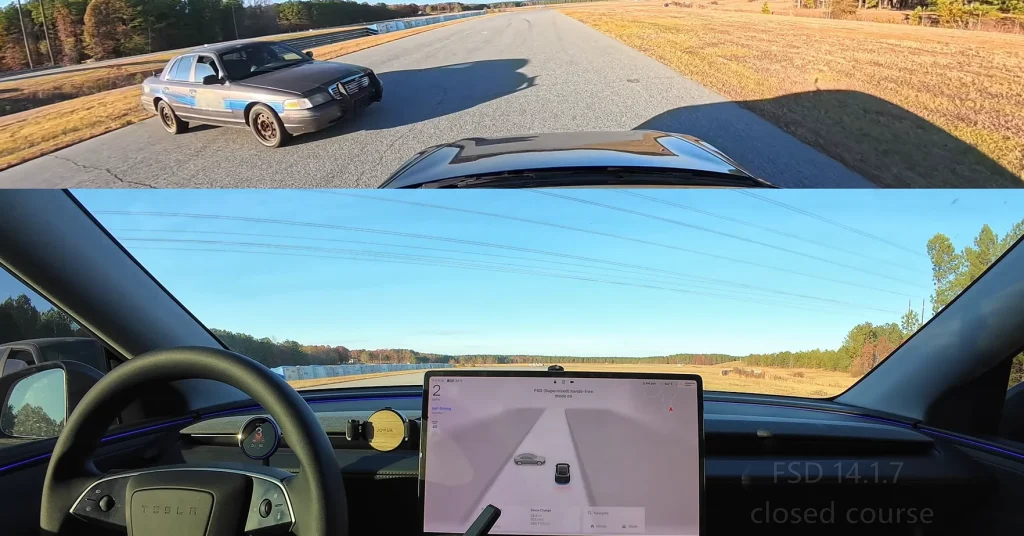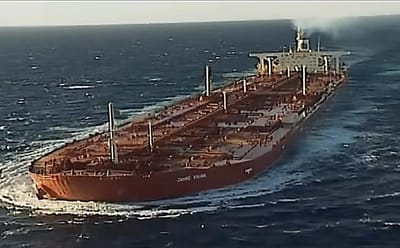Michigan guy attacks a self-driving Tesla by driving at it from all angles and the results are interesting
Published on Nov 25, 2025 at 4:02 PM (UTC+4)
by Ben Thompson
Last updated on Nov 25, 2025 at 9:57 PM (UTC+4)
Edited by
Emma Matthews
This Michigan man put a self-driving Tesla to the ultimate test with some interesting results.
Enabling Mad Max mode, the YouTube channel Dirty Tesla set this car loose on a closed track for an ‘extreme vehicle obstacle avoidance’ course.
That already sounds challenging enough, right?
Well, how about the added element of deliberately driving a car into the Tesla to see if the FSD could prevent a crash?
EXPLORE SBX CARS – Supercar auctions starting soon powered by Supercar Blondie
This self-driving Tesla was put through its paces in this extreme test
We’ve seen Teslas put to the test in a lot of different ways, haven’t we?
Whether it’s assisted parking or driving until the battery dies, there’s something in us that wants to see these EVs pushed to their limits.
And then there was the guy who launched his Tesla off a cliff, but that speaks for itself.
But Dirty Tesla wanted to see how well his car’s FSD would fare on a closed track.

To start with, there were stationary obstacles – child mannequins and fallen cargo.
The car dealt with these well for the most part.
But that wasn’t the end of his experiment.
“Static objects are one thing, but avoiding a 4,000Ib car that’s trying to hit you is a different beast,” he said.

“We’re simulating the worst drivers on the planet.
“We’re going to aggressively brake check FSD, cut it off, and even drive straight at the last second to see if the safety systems can predict a crash before it happens.”
Would this car make it off the lot in one piece?
What happened next? Would the FSD do its job?
The other car in this equation was a Ford Crown Victoria, driven by another member of the team.
When it first cuts in and crowds the Tesla from the side, the FSD reacted as it should – slamming the brakes, steering clear, and ‘getting away’.
There was a similar response when the Crown Vic came up from behind or from the right-hand side.

It led the Tesla’s driver to note that the car had a faster reaction time than he did.
It was almost as if it was scared of the other vehicle.
Various scenarios are played out, including the Crown Vic pulling out of a parking bay with sunlight directly in the Tesla’s camera.
But the FSD cut in each time, braking to avoid a collision.
Time and time again, the car delivered and kept the driver safe and sound.

However, if there was one critique the testers had, it was that the car should be more willing to leave the road if required.
There was also some inconsistency about the car’s reaction to emergency vehicles.
At one point, they put flashing police lights onto the Crown Vic, but this didn’t generate much of a reaction.
This led them to speculate that FSD’s emergency-vehicle response relies heavily on the sounds of a siren.
At any rate, this was an impressive demonstration of the capabilities of a self-driving Tesla.
Tesla Full Self-Driving timeline
2020: FSD ‘beta’ first released to select testers in the US
2021 – 2022: Rollout expands, as hardware updates come in
Early 2024: FSD ‘beta’ is now labelled ‘supervised’, meaning driver supervision is still required
2025: International expansion targets for FSD (Supervised) set in regions like Europe and China
Mid-2025: FSD v14 update announced
Late 2025: Roll-out of FSD v14 builds
Early 2026: Unsupervised FSD rollout goal
DISCOVER SBX CARS: The global premium car auction platform powered by Supercar Blondie




